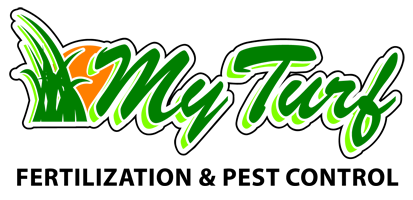
by Jason Kregel | May 22, 2018 | Blog
Now that we are over half way through May, we finally have minimum soil temperatures consistently hitting the 50’s. There are a few things we would like to make mention of:
1. Lawns are beginning their seed head producing stage now. Don’t be alarmed by this. Some of the annual grasses have been seeding for a few weeks, but now we are beginning to see the rest of our cool season grasses producing a seed head. This will typically go on for around 3 weeks. Once completed, please make sure to sharpen your mowing blades for a clean cut for the rest of the season. Seeding grasses will dull mower blades much quicker than grass that isn’t seeding. Dull mower blades that tear the turf can weaken the grass plant, causing extensive damage.

2. It is also time to bring your mowing height up a bit if you haven’t done so already. Shoot for 3″ or more at this point. If it gets into the 80’s in the next few weeks, the height should be brought up to between 3.25″ and 3.5″. Remember, a taller mowing height will produce the thickest, most lush, darkest lawn possible. Mowing low will negatively affect all of this. Don’t forget to measure with a ruler!
3. Irrigation- We have had plenty of rainfall lately and there is currently no need to be irrigating. Please have your system ready to go at a moments notice. In a week or two we could be much drier with temperatures in the 80’s. Be sure to begin watering at that point.
Please call us anytime at 616-813-3135 or email office@myturfllc.com if you have any questions.
“I treat your turf like it’s My Turf”
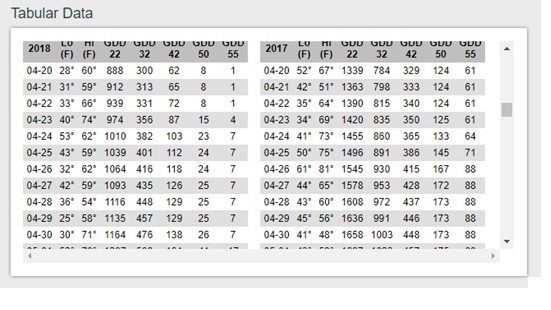
by Jason Kregel | Apr 30, 2018 | Blog
What are growing degree days and how does it affect my lawn?
As you have probably seen (and felt!), this spring is off to a pretty slow start. Two different weeks in April produced accumulating snow, and the temperatures outside of those weeks haven’t been much better. As we close the chapter on April and look to May, one tool turf managers use for timing and comparisons is growing degree days.
Growing degree days are, generally speaking, the accumulation of heat throughout a period. If you are interested, visit http://www.gddtracker.net/ and enter your zip code for more information. When calculating growing degree days, we are currently using a base of 50. This is calculated by adding up all the degrees for each day since February 19 that exceed 50 degrees. See the table below showing the data for the past week or so for 2018 compared with 2017.

As of April 29, using a base of 50 degrees, we have a total of 457 GDD. If we look back to last year at the same time, we had a GDD total of 991, which is over two times more accumulated heat as of the same date! If you are wondering why very few trees and other planting material has not popped yet, there is your answer! There are still a few partly dormant lawns out there as well. A few homeowners have made the first cut this past weekend and I think with the warmer weather coming up in the first half of this week, we will see most lawns requiring the first cut. This slow spring shouldn’t have much of a long term affect on lawns, but we are missing out on a nice growing month to help repair any drought damage from last September and October.
Please don’t hesitate to call or email if you have any questions at anytime. We can be reached by emailing office@myturfllc.com or calling 616-813-3135.
“I Treat Your Turf Like It’s My Turf”
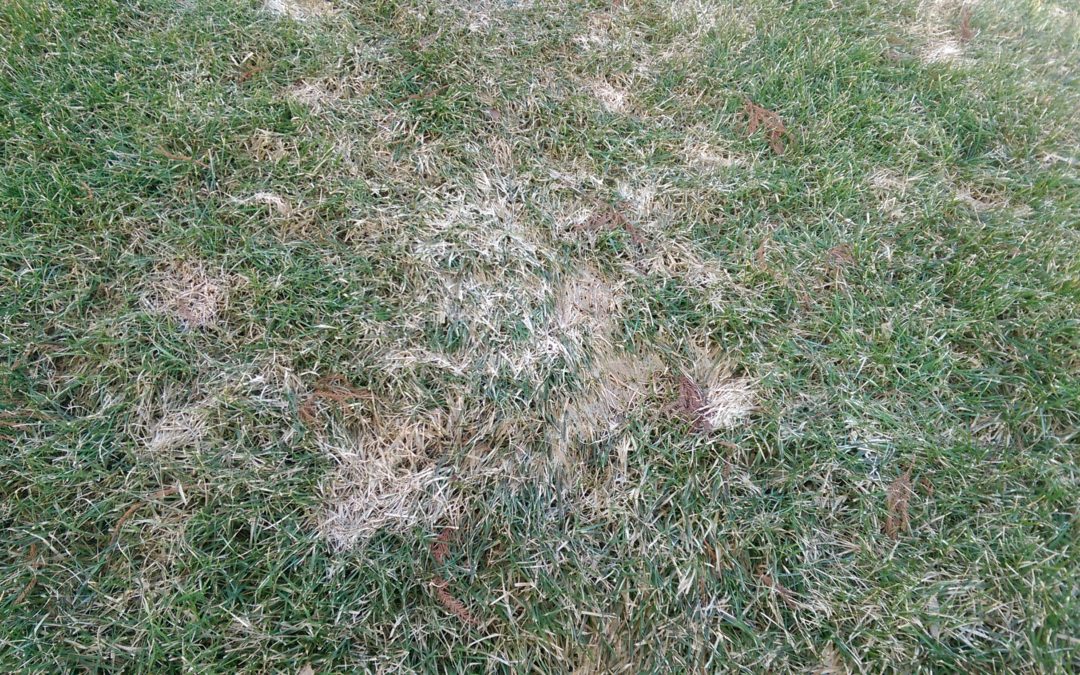
by Jason Kregel | Feb 28, 2018 | Blog
If you asked me 2 weeks ago I would tell you I didn’t think I would be writing a blog post about raking leaves and snow mold in February, but here we are. Temperatures are in the 50’s (for now), and the sun is shining. We had some trees drop leaves quite late last fall, especially the ornamental pear and a few other notorious late droppers, so you may have some leaves that were buried under the snow. If that is the case, please get out there and enjoy this short lived warmth we are having. Take the opportunity to clean up any remaining leaves to limit rot damage to the turf underneath. I’m afraid there won’t be much left of this poor turf if the leaves stick around until May.
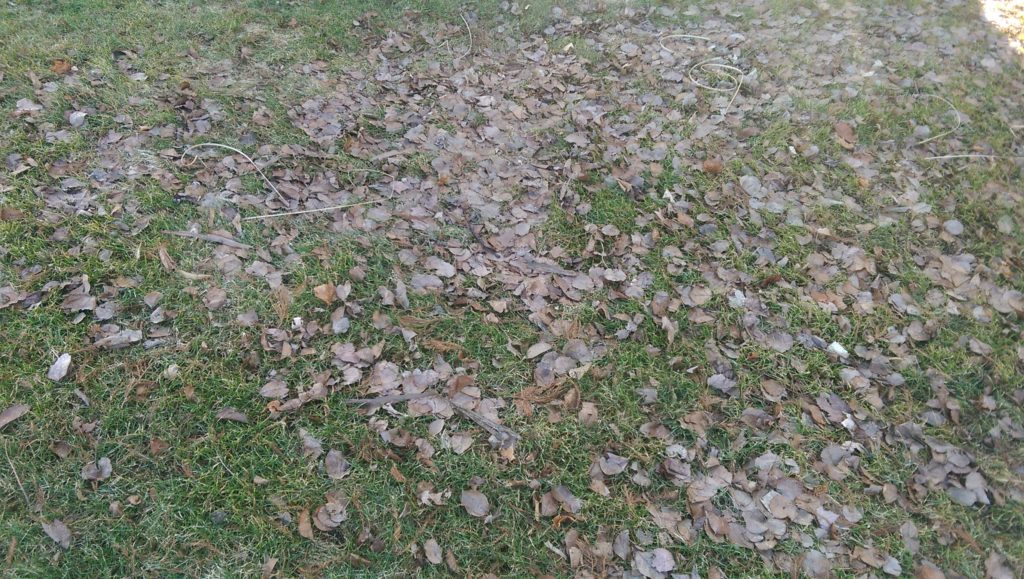
Now is also a great time to rake out any spots of snow mold you might have creeping in. I haven’t seen above average amounts of snow mold yet, but it is a little early to tell for sure. We had some extremely wet conditions from the end of October through November, so that won’t help things. On the positive side, we had some interruptions in snow cover this winter, which is helpful in minimizing snow mold damage. I’m afraid we will have more winter weather between us and spring, but an hour or so of work now will pay dividends come springtime.
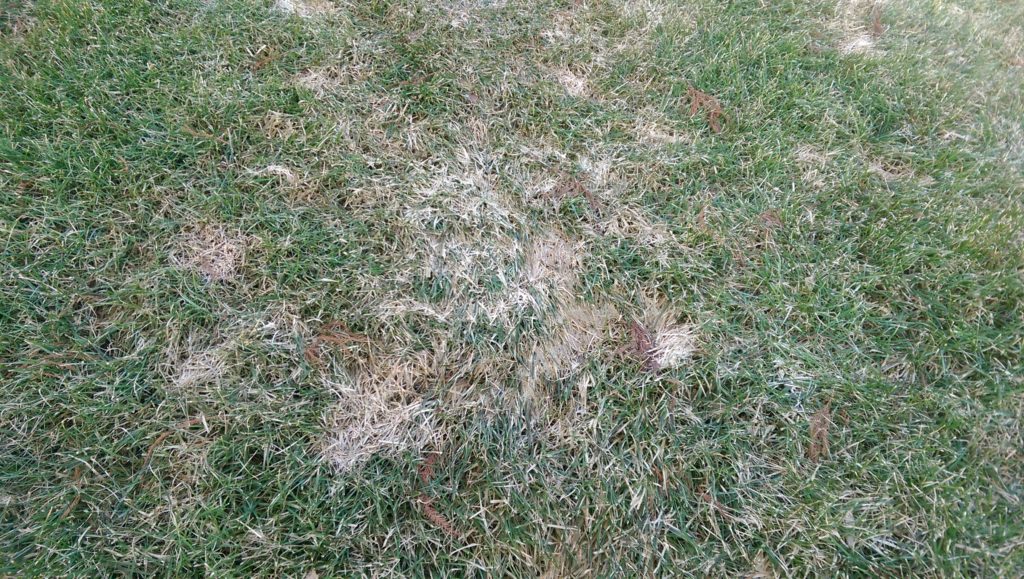
As always, we are here for you. If you have any questions please call our office at 616-813-3135 or email us at office@myturfllc.com
“I treat your turf like it’s My Turf”
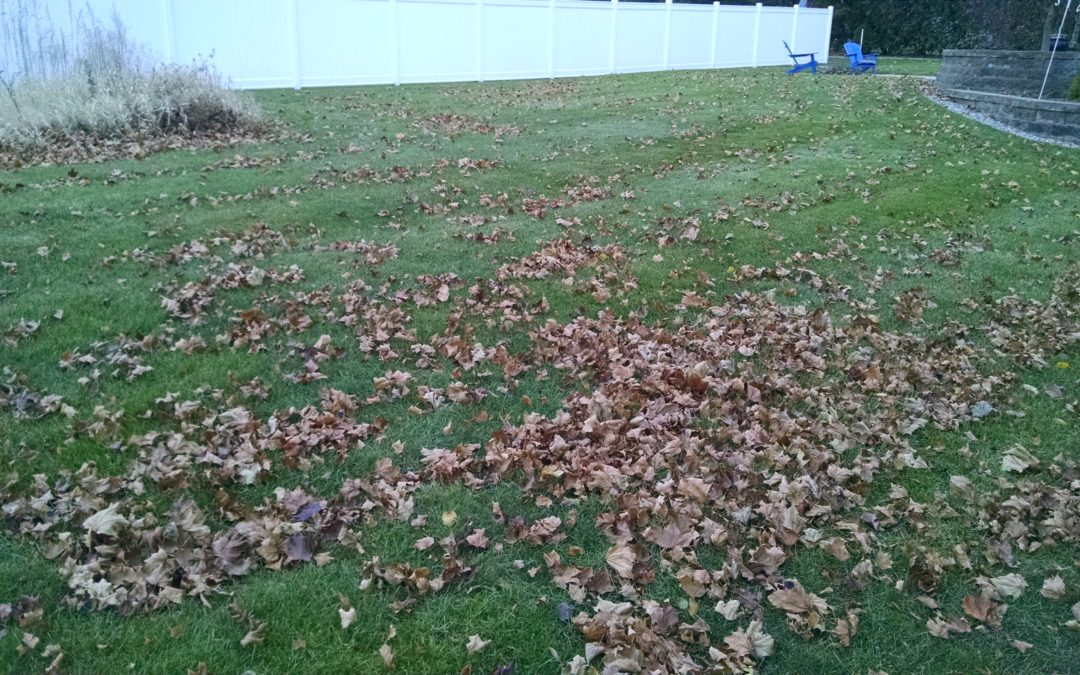
by Amy Zevenbergen | Nov 24, 2017 | Blog
All of us at My Turf hope you are having a great Thanksgiving weekend. The sun is shining (at this particular moment) and it’s not raining. What more could we ask for on the day after Thanksgiving in West Michigan! Just a quick note- if your leaves are still dropping, please make sure to get them cleaned up in the next week or two. The leaf drop has been much later than normal this year and we are concerned that if we have leaves on lawns getting buried with an early December snowfall we will be left with a mess next spring.
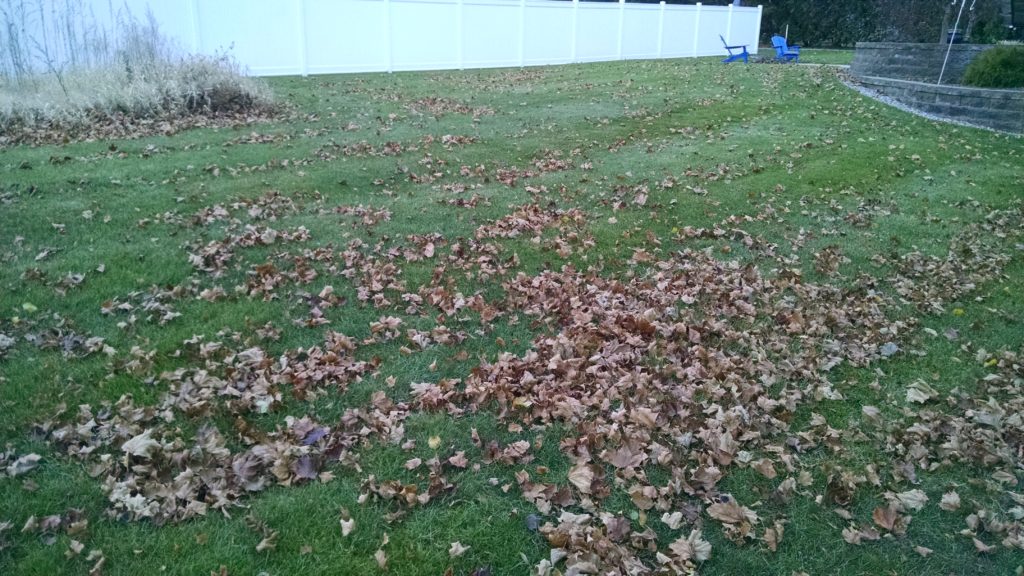
Leaf cover over the winter almost always leaves us with matted down grass which will either rot away or be attacked by snow mold. Try to get your lawn mowed down to a height of 2″ or just under that and leave your lawn clear of leaves before the first snowfall and you should be in good shape for next spring. As always, let us know if you have any questions!
by Amy Zevenbergen | Oct 27, 2017 | Blog
We just went from one extreme to the next! Dry weather all summer, but especially in September and early October, and now an abundance of rainfall. Grand Rapids has officially had more rain in October (and we are not done yet) than in June, July, August, and September combined. This fall season has been fairly stressful on lawns with the lack of water, and I think we are going to see some areas not completely recover as well as some extra weed pressure in these areas beginning next spring. We will be ready and waiting to take on the challenge again next spring.
Just a couple things on the Fall checklist for now:
- Lower mowing height to 2″. You can go a touch lower if you wish over the next month but at least get it to around 2 for now. If you leave your grass too long over the winter the risk for snow mold and other winter damage increases.
- Don’t forget to schedule your irrigation winterization. We had a decent freeze this morning and cooler temps are on their way. It is safe to say we will not need to water anymore for this season.
Stay Dry!27
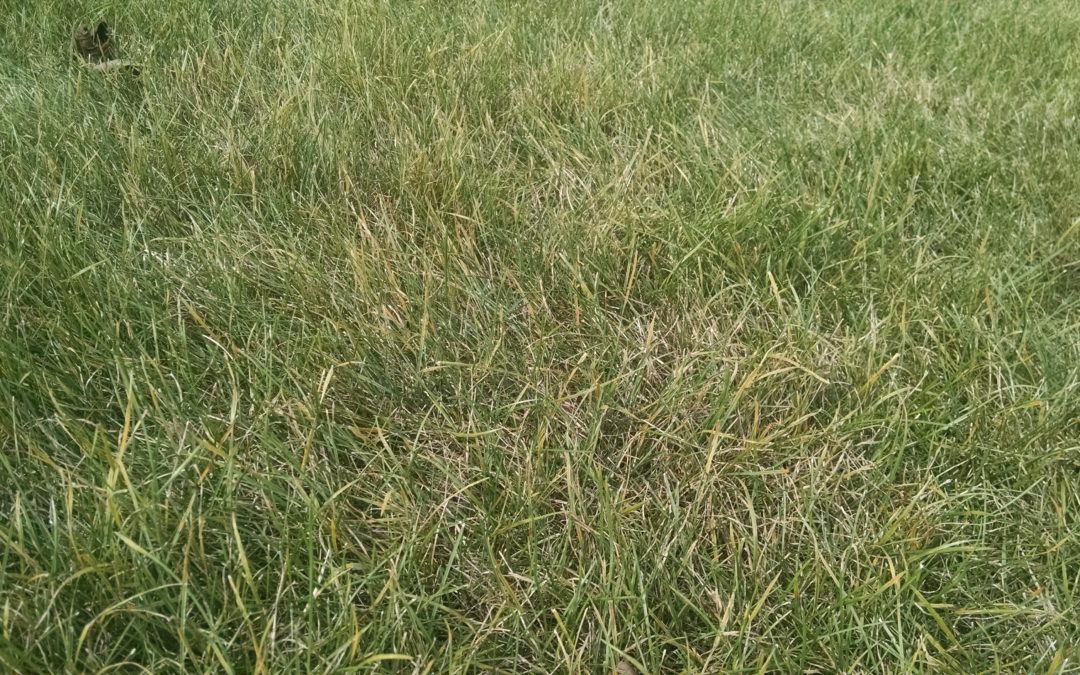
by Amy Zevenbergen | Sep 13, 2017 | Blog
Dry and rusty is the theme for the month of September. We seem to have more rust fungus than normal on lawns this fall due to the dry weather and slow down of growth on lawns. The recent cool nights with heavy dew, combined with the lack of rainfall, have created the perfect conditions for this fungus to thrive. Rust fungus tends to mostly affect rye grass but can and will affect bluegrass as well.

Overall, the lawn may take on a yellowish appearance but upon closer inspection you will see individual blades of grass coated with an orange or yellow powder that easily rubs off.

August and the first part of September have been very dry. Here is the precipitation data for Hudsonville since the beginning of August. On August 3 we had 1.15″ of rain and since then the most we have had was .55″ on August 17. The rest of the events were less than .2″ per event. We need to rely on our sprinkling systems or good old fashioned hoses to do the rest.
STATION: hudsonville
STATION ID: hvl
LOCATION: Michigan Celery Cooperative
CITY: Hudsonville
LATITUDE: 42.8594 deg.
LONGITUDE: -85.8895 deg.
ELEVATION: n/a
LOGGER PROGRAM: mawn_hvlf
DATE/TIME: 2017-09-13/08:13:05
=============================
DAILY WEATHER DATA – SUMMARY:
=============================
DATE PCPN
==================
08/01/2017 —-
08/02/2017 —-
08/03/2017 1.15
08/04/2017 0.20
08/05/2017 —-
08/06/2017 —-
08/07/2017 0.19
08/08/2017 —-
08/09/2017 —-
08/10/2017 0.10
08/11/2017 0.13
08/12/2017 0.01
08/13/2017 —-
08/14/2017 —-
08/15/2017 0.04
08/16/2017 —-
08/17/2017 0.55
08/18/2017 —-
08/19/2017 —-
08/20/2017 —-
08/21/2017 —-
08/22/2017 0.17
08/23/2017 —-
08/24/2017 0.01
08/25/2017 —-
08/26/2017 —-
08/27/2017 —-
08/28/2017 0.02
08/29/2017 —-
08/30/2017 —-
08/31/2017 —-
09/01/2017 —-
09/02/2017 0.04
09/03/2017 —-
09/04/2017 —-
09/05/2017 0.07
09/06/2017 0.07
09/07/2017 0.20
09/08/2017 0.03
09/09/2017 —-
09/10/2017 —-
09/11/2017 —-
09/12/2017 —-
==================
Variable Ids:
PCPN: Precipitation (in)
=========================================================================
Data provided by the Michigan Automated Weather Network (MAWN)
and Enviro-weather Program.
|
The good news is that rust fungus will not permanently hurt your lawn. The bad news is that it makes a mess of shoes, mowers, and everything else it touches. The most important thing we need to do to combat rust fungus is to make sure we are doing everything possible to maintain consistent growth. Check soil moisture with a shovel. If your soil 1″ down is powdery dry or does not have enough moisture in it to make the soil somewhat sticky then you need to increase watering to stimulate new growth. Heavier, infrequent watering cycles are best to help wash off the fungus and stimulate new growth. Depending on the type of soil present, an every other day watering cycle should be sufficient. If your lawn is not treated professionally, make sure to feed it with a fall application to help maintain nutrient content. Continue to mow at regular intervals as well.
As always, feel free to call or email with any questions!
(616)813-3135

